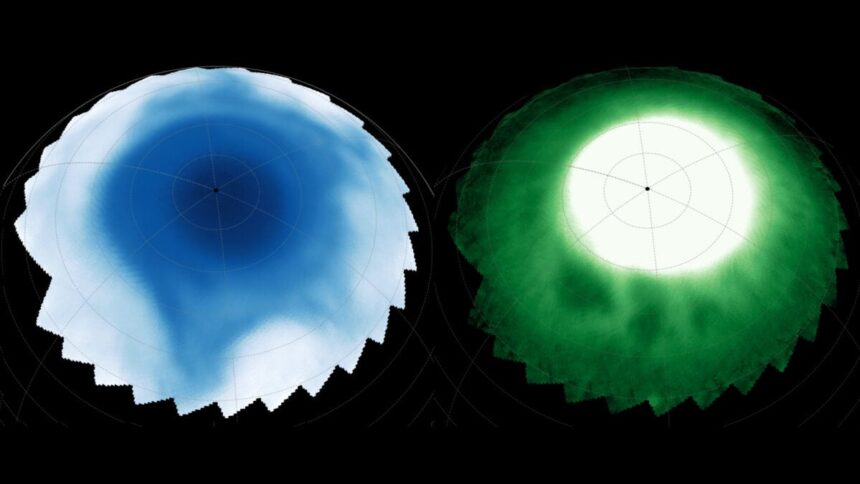Saturn already tops the list of the coolest-looking objects in our solar system, but a new finding might put it on another level. Using the James Webb Space Telescope (JWST), astronomers spotted strange, beady patterns spreading across the planet’s atmosphere—features never seen before on any other planet in the solar system.
In a recent Geophysical Research Letters paper, astrophysicists led by Tom Stallard of Northumbria University in the United Kingdom describe their investigations into the infrared emissions from Saturn’s aurora and upper atmosphere. Contrary to expectations, the team discovered “fine-scaled patterns of beads and stars that, despite being separated by huge distances in altitude, may somehow be interconnected,” Stallard explained in a release.
Saturn’s atmosphere emits small signals that make it difficult for astronomers to study in detail, Stellard said. However, the relative clarity of the newly discovered patterns could offer a much-desired window into understanding the giant planet’s weather patterns, he said. For now, however, these “features were completely unexpected and, at present, are completely unexplained.”
Studying the invisible
The study describes a continuous 10-hour observation period from November of last year. During that time, the team zoned in on H3+, a positively charged form of hydrogen. The molecule plays a critical role in the chemical and physical reactions within Saturn’s atmosphere and is within detection range of JWST’s Near Infrared Spectrograph.
With that, the team simultaneously studied Saturn’s ionosphere and the stratosphere, two sections that have traditionally been difficult for scientists to study. Under the infrared spectrum, however, a different picture emerged, which the team recorded in close detail.
Saturn gets artistic
The team noticed two odd patterns in different layers of Saturn’s atmosphere. In the ionosphere—filled with electric plasma—a series of “dark, bead-like features embedded in bright auroral halos” swirled midair, they explained. The stratosphere, on the other hand, flaunted a lopsided, star-like pattern extending from Saturn’s north pole toward the equator. A closer analysis revealed that the patterns actually lay on the same region of Saturn, just at different levels of the atmosphere.
“We think that the dark beads may result from complex interactions between Saturn’s magnetosphere and its rotating atmosphere, potentially providing new insights into the energy exchange that drives Saturn’s aurora,” Stellard said. “The asymmetric star pattern suggests previously unknown atmospheric processes operating in Saturn’s stratosphere, possibly linked to the hexagonal storm pattern observed deeper in Saturn’s atmosphere.”
That said, the team isn’t sure yet whether this is a one-time occurrence or a regular weather event for the planet. This will be something they’ll have to confirm with future observations, they said. Should that happen, our new understanding of Saturn’s ionosphere may even inform how we perceive the “complex swirling of Earth’s thermosphere,” the researchers said in the paper.
Now is a great time to do this, Stellard added, as Saturn is at its equinox—when the Sun appears directly above the planet’s equator—a rare event that happens every 15 Earth years. The unusual arrangement of these stellar entities may reveal some unexpected atmospheric events, according to the paper.
“Since neither atmospheric layer can be observed using ground-based telescopes, the need for JWST follow-up observations during this key time of seasonal change on Saturn is pressing,” Stallard added.
Read the full article here












